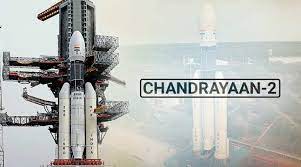

India's upcoming lunar mission, Chandrayaan-3, is set to launch soon, following in the footsteps of its predecessor, Chandrayaan-2. While both missions share many similarities, Chandrayaan-3 will have a slight difference—it will exclude an orbiter. This mission ihas been launched today, approximately four years after the launch of Chandrayaan-2 on July 22, 2019. Like Chandrayaan-2, Chandrayaan-3 will utilize the Geosynchronous Satellite Launch Vehicle Mark III for its journey into space.
ALSO READ:
Chandrayaan-3 closely mirrors the design and objectives of Chandrayaan-2, with one notable distinction—the absence of an orbiter. An orbiter is a spacecraft that orbits around the moon and gathers valuable data. While Chandrayaan-3 will omit this component, it will focus on accomplishing the mission's primary goal: a soft landing on the lunar surface.
The launch of Chandrayaan-3 is scheduled for July 14, 2023, at 2:45 pm IST. This launch date comes nearly four years after the successful launch of Chandrayaan-2. The Geosynchronous Satellite Launch Vehicle Mark III, known for its reliability and power, will be the launch vehicle chosen for Chandrayaan-3's journey into space.
Chandrayaan-3 represents India's ongoing commitment to lunar exploration. By building upon the lessons learned from Chandrayaan-2, the Indian Space Research Organisation (ISRO) aims to refine their technologies and increase the chances of a successful soft landing on the moon's surface.
The Chandrayaan-2 mission, consisting of an orbiter, lander, and rover, experienced a setback when the lander, Vikram, failed to achieve a smooth landing on the lunar surface. This failure occurred due to a software glitch, resulting in a loss of communication with the lander just before touchdown on September 7, 2019. However, despite this setback, the other aspects of the mission were successful.
The Vikram lander performed normally until an altitude of 2.1 kilometers, after which contact with the mission control station was lost. It followed the planned descent trajectory but ultimately crash-landed on the Moon along with the rover, Pragyan, resulting in their destruction. However, the Chandrayaan-2 orbiter successfully entered the intended orbit around the Moon.

On September 10, 2019, ISRO announced that the Chandrayaan-2 orbiter had located the Vikram lander. NASA's Lunar Reconnaissance Orbiter (LRO) captured images of the landing site on September 17, 2019, and further images were used to search for signs of Vikram. Shanmuga Subramanian, an engineer from Chennai, identified debris from the crash and shared his discovery with the LRO project, locating it about 750 meters northwest of the main crash site.
Due to poor illumination in the initial images, deciphering the information about the impact point was challenging. However, subsequent images taken on November 11 provided better pixel scale and lighting conditions, revealing the impact crater and extensive debris field more clearly.
Despite the lander's unsuccessful landing, approximately 90 to 95 percent of Chandrayaan-2's mission objectives were accomplished. The orbiter's successful functioning and the valuable data it collected contributed significantly to India's lunar exploration endeavors.
.jpeg)
Chandrayaan-3 stands apart from Chandrayaan-2 not only because it lacks an orbiter but also because it carries a new payload called Spectro-polarimetry of HAbitable Planet Earth (SHAPE). This payload, integrated into Chandrayaan-3's propulsion module, serves a specific purpose.
SHAPE's primary function is to conduct spectro-polarimetric measurements of Earth from lunar orbit. Spectro-polarimetry involves splitting incoming light into its constituent colors and analyzing the polarization of each color individually. By studying the spectro-polarimetric signatures of Earth, SHAPE aims to gather valuable data about our planet.
The University of Maryland, Baltimore County (UMBC) Observatory explains that analyzing the spectro-polarimetric signatures of Earth allows scientists to understand the polarization of light reflected from our planet. This knowledge is crucial in deciphering the reflected light from exoplanets—planets outside our solar system—and evaluating their potential habitability.
By carrying SHAPE, Chandrayaan-3 expands the scope of its mission by contributing to the study of exoplanets and furthering our understanding of habitability beyond Earth.